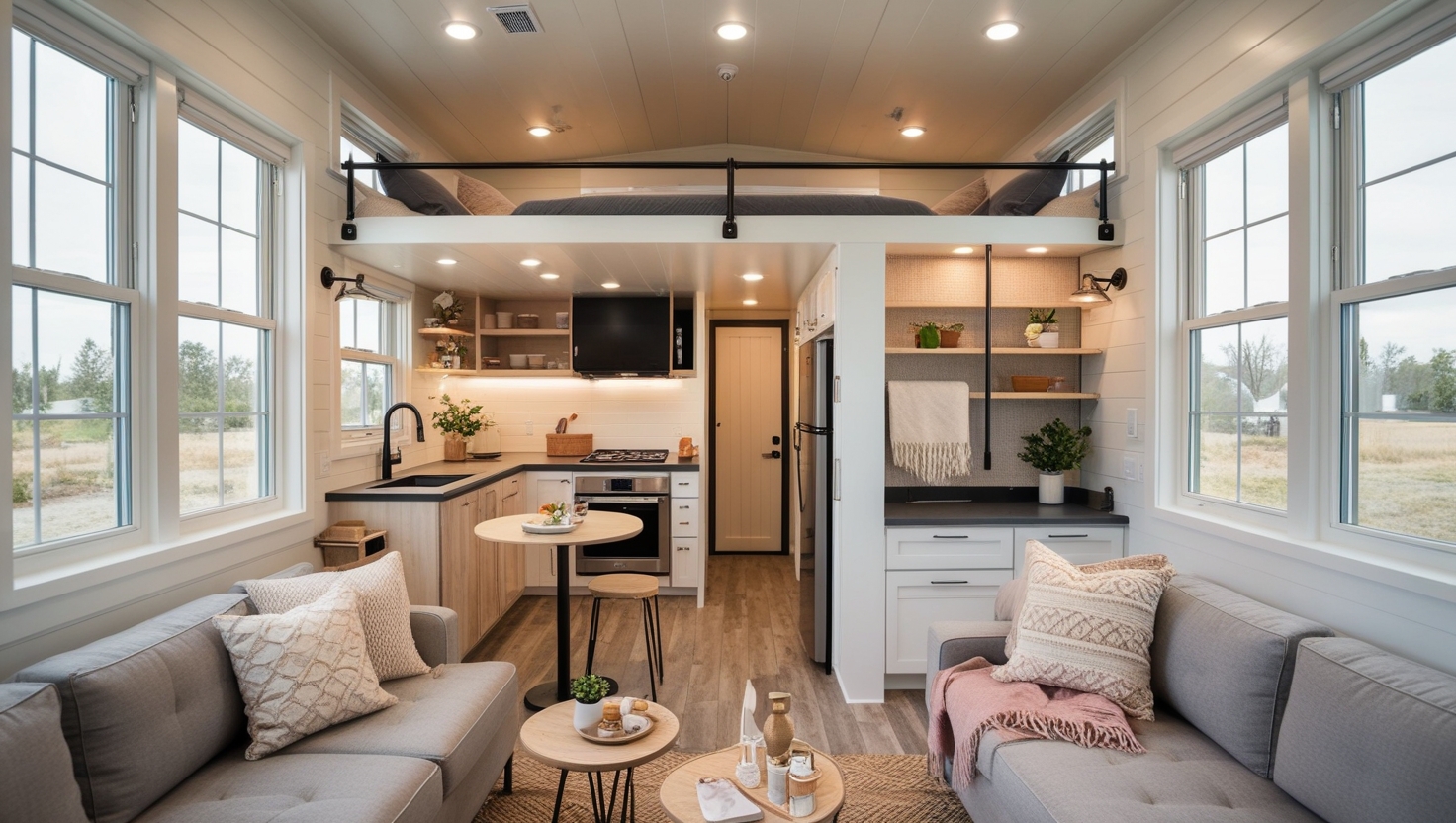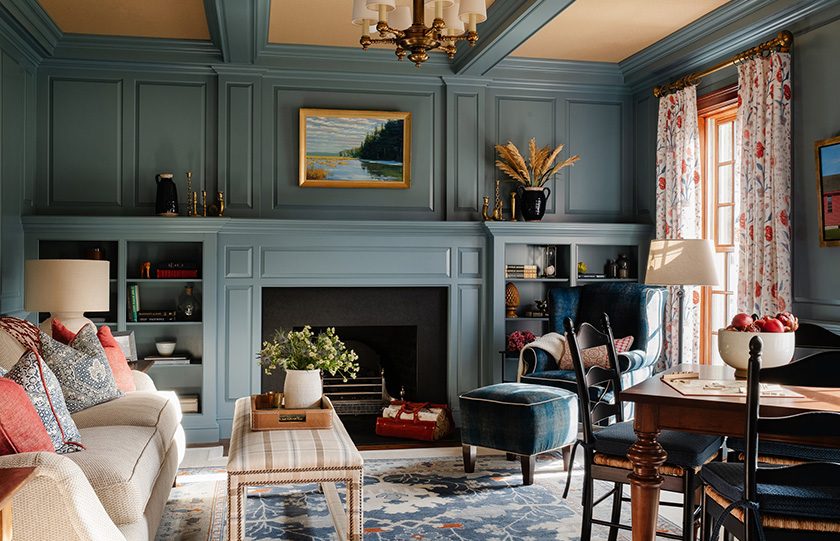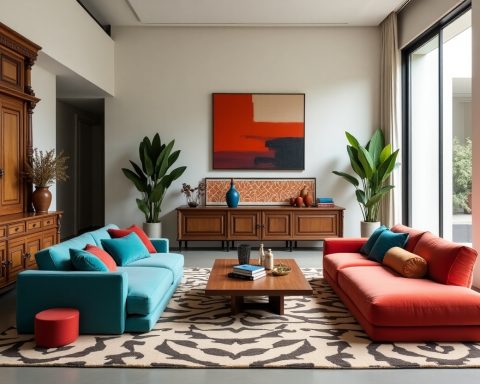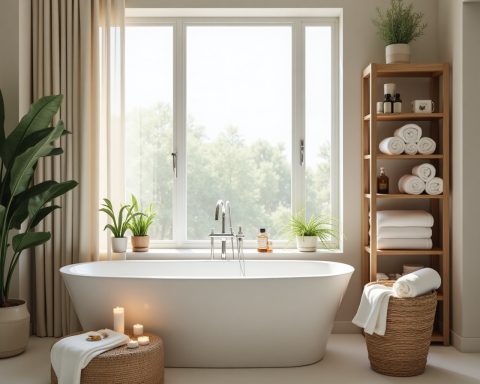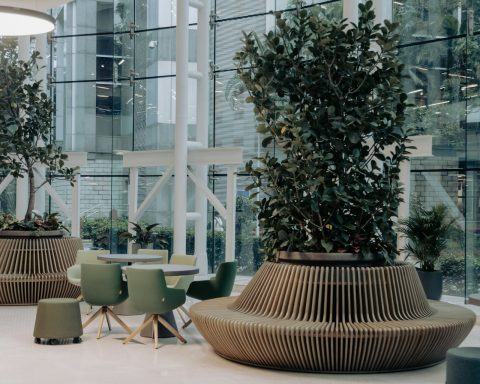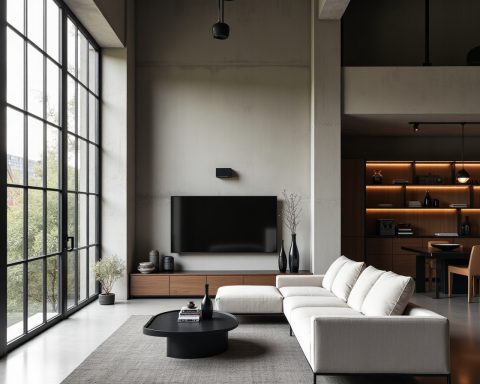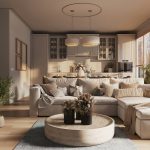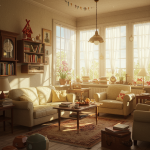In a world where urban living demands smart spatial strategies, mastering the art of micro-space design is no longer just a luxury—it’s a necessity. At just 30 square meters, your space can still reflect elegance, comfort, and functionality without compromise. Let’s delve deep into the most effective interior design techniques, architectural tricks, and style secrets to transform your compact living area into a grand, multi-functional sanctuary.
Maximize Vertical Space with Strategic Storage Solutions
One of the golden rules in small-space living is to look up. Vertical real estate is often underutilized, yet it offers tremendous storage and style potential. Think beyond traditional shelves—install full-height cabinetry, wall-mounted bookcases, and hanging storage.
- Floating shelves draw the eye upward and provide open storage without visual bulk.
- Tall wardrobes with built-in compartments can eliminate clutter entirely.
- Overhead cabinets in the kitchen or hallway keep less-used items out of sight but within reach.
Pro Tip: Use doors with mirrors or glass to reflect light and expand the visual field.
Create Illusions with Light, Mirrors, and Reflective Surfaces
Light plays a crucial role in making a small space feel airy and expansive. The key is to allow natural light to flood the interior and supplement it with strategically placed artificial lighting.
- Sheer curtains or roller blinds ensure privacy without blocking daylight.
- Use mirrors on opposite walls to bounce light and create a doubling effect.
- Choose glossy finishes for cabinets, tiles, and furniture to reflect light naturally.
Bonus: Add LED strip lights under shelves and counters to enhance depth and drama.
Use Multipurpose Furniture That Adapts to Your Lifestyle
Every piece of furniture in a 30m² apartment should work double or triple duty. Convertible furniture ensures functionality without taking up unnecessary space.
- A sofa bed turns your living room into a cozy bedroom at night.
- Extendable dining tables accommodate guests while conserving space daily.
- Ottomans with hidden storage, nesting tables, and fold-out desks are must-haves.
Look for sleek, minimal lines and light-colored upholstery to maintain an open and uncluttered look.
Open Floor Plan with Defined Zones
While knocking down walls isn’t always an option, creating an open-plan layout with designated zones gives the impression of a much larger space.
- Use area rugs, low shelving, or ceiling-mounted curtains to subtly divide areas.
- Maintain a cohesive color palette across zones to unify the space.
- Place furniture strategically to separate the living area, kitchen, and sleeping quarters without physical partitions.
Important: Avoid blocking natural walking paths with large furniture. Flow is king in micro-living.
Go Minimalist Without Losing Character
A minimalist approach ensures that every item in your home has a purpose, story, or visual impact. Decluttering is essential, but minimal doesn’t mean sterile.
- Choose quality over quantity. A single art piece or statement lamp can replace multiple smaller accents.
- Incorporate textured materials—linen, leather, wood—for warmth and personality.
- Limit decorative items to clusters of 3-5 per surface to avoid visual noise.
A well-curated space always feels larger, richer, and more intentional.
Smart Kitchen and Bathroom Design
In 30m² apartments, the kitchen and bathroom can easily feel cramped if not designed thoughtfully.
Kitchen Tips:
- Go for slimline appliances and under-counter fridges.
- Utilize pegboards, hanging racks, and magnetic strips for utensils and spices.
- Install pull-out pantries or corner cabinets for optimal use of every inch.
Bathroom Tips:
- Use wall-mounted sinks and toilets to free up floor space.
- Install a glass shower partition instead of opaque curtains or walls.
- Add recessed shelves in shower and vanity areas.
Color Psychology and Visual Expansion
Color is one of the most powerful tools in visually expanding a room.
- Opt for light, neutral tones like soft white, dove grey, and sand beige for walls and ceilings.
- Use monochrome or tone-on-tone palettes to reduce contrast and blend boundaries.
- Introduce color through accents—pillows, artwork, small furniture—to avoid flatness.
Pro Designer Tip: Paint ceilings a slightly lighter shade than the walls to create height illusion.
Customized Built-Ins and Fold-Away Systems
Investing in custom built-ins may seem pricey initially, but their long-term benefits in micro-spaces are unmatched.
- A built-in bed platform can house drawers or even a hidden desk.
- Fold-away Murphy beds, wall-mounted dining tables, or collapsible desks are perfect for daily transformations.
- Customize nooks into workstations or reading corners with bespoke carpentry.
Every centimeter should serve a function, be it storage, style, or both.
Biophilic Touches and Organic Design
Even the smallest homes benefit from the presence of nature. Biophilic design enhances mental well-being and makes a space feel fresh and open.
- Use potted plants, vertical gardens, or succulent walls to bring life indoors.
- Choose natural wood finishes, stone countertops, or woven textiles to infuse organic textures.
- Indoor herbs near the kitchen window serve both aesthetic and functional purposes.
Tip: Keep plant sizes proportional to the room—go for tall, slim plants like snake plants or palms.
Hide Clutter, Reveal Style
Clutter is the number one enemy of small-space elegance. Adopt a “store it or show it” approach.
- Incorporate hidden storage under beds, within steps, or inside ottomans.
- Use stylish baskets, bins, or lidded boxes on open shelves for a curated look.
- Keep surfaces clean and styled—your countertops, side tables, and dressers should never feel overloaded.
Final Thoughts: Design Boldly, Live Grandly
A 30m² apartment doesn’t mean you have to compromise. With the right strategies, smart furniture choices, and aesthetic discipline, you can enjoy a lifestyle that feels spacious, functional, and full of charm.
Design is about intention. When every element in your space is curated to serve a purpose or spark joy, even the smallest studio can feel like a luxurious mansion.
